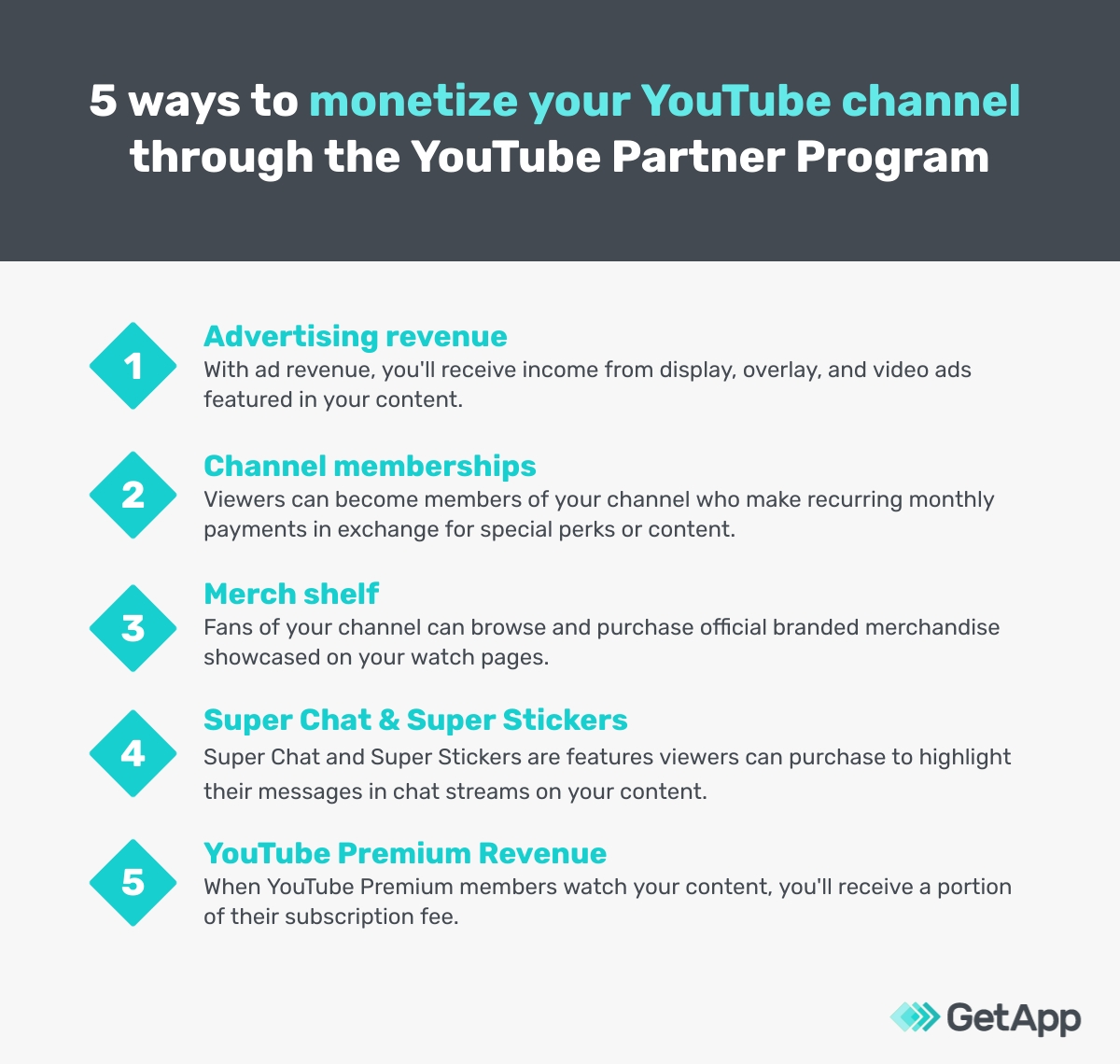Here’s Everything You Need to Know About YouTube Demonetization Rules
Want to turn your channel into a business? Use this guide to navigate the full monetization process, from applying to the YouTube Partner Program to navigating demonetization rules.
Did you know that YouTube is the second most popular site on the internet after Google? In fact, billions of hours of content are consumed on YouTube every single day.
If you’re a content creator, you’re probably already aware of the traffic that YouTube attracts daily, because it represents potential income for your channel. But you might also be wondering how to navigate YouTube’s demonetization policy so that you can actually start capitalizing on that potential.
We’re here to help with that. Whether you’re just at the onset of your monetization journey or you’re fed up with seeing that yellow dollar sign by your videos, we’ll cover everything you need to know about monetizing your YouTube channel, including how to survive the adpocalypse.
What does YouTube demonetization mean?
First, let’s start with the basics: What does YouTube demonetization even mean?
What is demonetization?
Demonetization, often referred to as “the adpocalypse,” is when a YouTuber’s video or channel is prohibited from featuring paid ads. When this happens, the potential earnings a content creator can make off their channel dwindles, because ad revenue is the primary way to directly generate income on YouTube.
Demonetization was introduced by YouTube in 2012 as a way for advertisers to ensure their ads aren’t featured on videos that contained questionable content or adult themes such as pornograghy, hate speech, or radical political opinions—all of which would reflect poorly on an advertiser to support.
You may think that your YouTube content isn’t at risk of being demonetized because it doesn’t include any risqué themes, but you’d be surprised. YouTube’s everchanging advertising algorithm is tricky to navigate, but we’ll give you some advertiser friendly content guidelines that will help you avoid that yellow dollar sign.
But before you start worrying about your videos getting demonetized, your channel needs to be eligible for monetization in the first place, so let’s talk about how you can achieve that.
How to monetize your YouTube channel
If you want to make money off of your YouTube content, you first need to apply to the YouTube Partner Program (YPP).
The YPP is the only way you can monetize your YouTube channel and start generating income directly from the platform. The good news is that once you’re approved, you’ll have access to YouTube’s copyright match tool, creator support teams, and multiple monetization features.
Before you apply, make sure you meet the following minimum requirements:
Live in a country or region where the YouTube Partner Program is available
Have over 4,000 valid public watch hours in the last year
Have more than 1,000 subscribers to your channel
Have a linked AdSense account
Follow all of the YouTube monetization rules
You can read more about each of these requirements here or watch this video for a quick introduction to the YouTube Partner Program and how you can prepare to apply for it:
Once you’ve applied, it will take about a month to hear whether or not your channel has been accepted. If you’ve been accepted, you can start monetizing your channel through the following methods:

Each of these monetization methods has its own set of requirements, and some features may not be available to you depending on local legal requirements. For more information on the specific requirements for each feature, check out this topic directory.
How to avoid having your content demonetized
If you’ve just applied for the YouTube Partner Program, bookmark this page and we’ll see you back here in a month (you can check the status of your application here).
Or if you’re here because you’ve already been approved for the YPP, congratulations! Now, let’s talk about demonetization.
Demonetization happens when your channel or videos violate any of YouTube’s monetization policies including the community guidelines, terms of service, copyright rules, and Google AdSense program policies. Further, if you’d like to monetize your videos with ads, your content must meet the advertiser-friendly content guidelines.
You can read in depth about each of these policies here, but we’ll cover the basics below.
YouTube’s community guidelines
Content on YouTube must comply with its community guidelines or else it will be demonetized and removed from the platform. This means that you should avoid featuring sensitive topics or adult themes in your content.
Examples of content that violates YouTube’s community guidelines:
Spam, deceptive practices, and scams
Nudity and sexual content
Child endangerment
Hate speech
Harassment and cyberbullying
Copyright protections
The best way to avoid copyright violations on YouTube is to only upload videos that you (or your team) have made. Additionally, do not use content in your video that another party owns the copyright to such as music or video footage from another program or creator.
There are exceptions to this recommendation—for instance, you can license copyrighted content in order to use it in your video or follow fair use guidelines in order to use unlicensed content.
Google AdSense program policies
AdSense is the program that allows content creators to monetize their YouTube videos. AdSense is governed by its own extensive set of guidelines, mostly set to ensure that videos that are monetized contain unique, interesting, and distinguishable content.
This means that repetitious and reused content is not eligible for monetization. For example, a montage of clips from a TV show or a video where the creator features readings from another site without adding their own commentary would both violate the Google AdSense program policies.
At the risk of being repetitive, the best way to avoid being demonetized is to only upload content that you or your team have created. If your channel’s theme is contingent on the use of others’ content, be aware that even with the addition of commentary or artistic editing, there’s always a risk of demonetization when using others’ content.
Advertiser-friendly content guidelines
As mentioned at the beginning of this guide, in order to receive ad revenue, your content needs to meet YouTube’s advertiser-friendly content guidelines. These guidelines help make sure that ads aren’t featured on videos that include inappropriate language, references to drug usage and firearms, or otherwise shocking or harmful content.
We recommend reading more about what violates the advertiser-friendly content guidelines here, but as a rule of thumb, keeping your content PG-13 should help you avoid getting demonetized due to a violation.
So… you’ve been demonetized. Now what?
If you find that your channel or videos have been demonetized for any reason, you can submit a request for human review of your content. To read more about the appeals process, visit this page.
To submit an appeal, follow these steps:
Sign in to your YouTube Studio account.
Using the left menu, navigate to “Content.”
Go to the video you’d like to appeal under the “Restrictions” column
Hover over “Ad Suitability,” then click “Request review.”
Follow the on-screen directions (you'll only see these if your video is eligible for appeal).
Once you submit your request for review, the text next to the video will update with your appeal's status.
Find more resources to help you manage your channel
We hope this guide has prepared you to turn your content into a cash cow. And if you’ve found this article helpful, there’s even more resources for your YouTube channel on our site:
A Guide to YouTube Thumbnail Images (Dimensions, Best Practices, and Examples)
What is YouTube Premium, And What Does it Mean For My Business?
We also recommend taking a look at the tools in our video making and video editing software directories, where you can compare tools’ functionality and usability, as well as read reviews from real users like you.

Sierra Rogers
